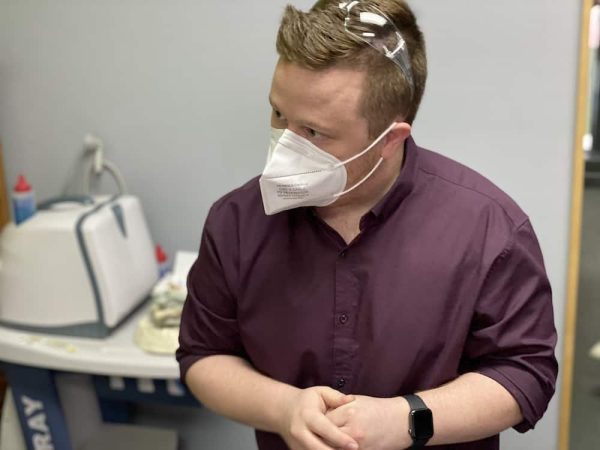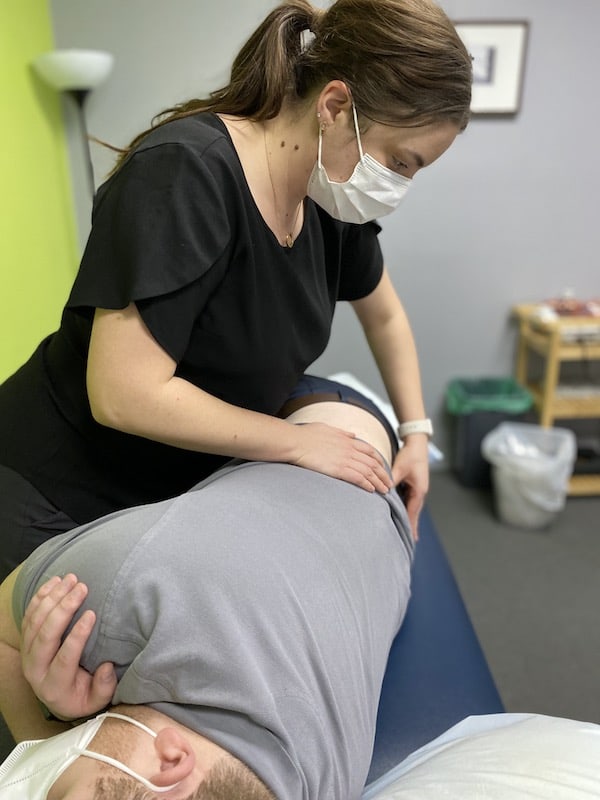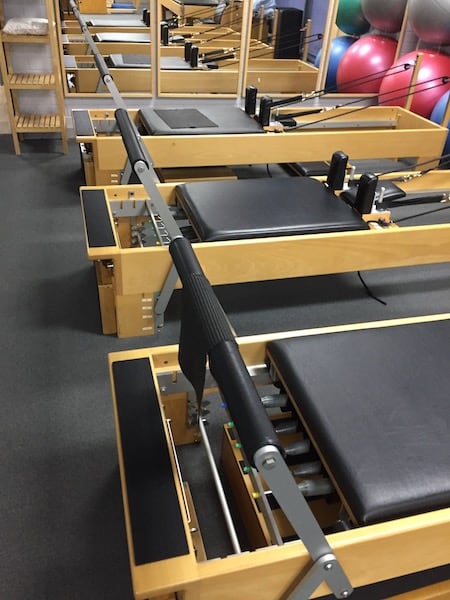We have continually attracted South Australia’s best physios, remedial massage therapists and support staff as a result of our culture and our values. And music. And fine coffee.
Back Pain Physio Adelaide
If you are in Adelaide, living with back pain and
- Frustrated with your back pain, restricted movement and lack of improvement?
- Unable do the sport or activities that you enjoy in life because of your back?
- Worried about doing things that might make it worse?
- Struggling to do your normal duties at work?
- Sleeping poorly and waking up feeling tired, stiff and … old ?
then you are absolutely in the right place!
The best way, not the usual way.
If you are looking for a back pain physio, Adelaide West Physio does things the best way.
We provide our patients with the most time-effective and cost-effective treatment with the knowledge that they are getting the highest quality physiotherapy available.
We provide back pain physio using modern back pain research, combining the latest evidence for manual therapy, education, technology and movement.
This challenges the ‘usual way’ – the traditional, out-dated ideas about managing back pain and how many health professionals continue to treat it.
Call us on (08) 7282 0871 to speak with a back pain physio about how we could help you!

Why work with us to solve your back pain?
1. Persistent back pain is our focus
Our focus is helping Adelaide people with persistent back pain who haven’t responded to usual treatment.
Persistent, ongoing back pain cannot be approached in the same way as an acute injury. It takes a different set of skills, knowledge and experience.
2. Long term recovery, not simply short term pain relief
We feel strongly that the high rates of persistent back pain problems are avoidable. It starts with the right management in the acute stage.
Helping people with back pain problems isn’t just about becoming pain-free. It is about recovering full function, freedom of movement, strength and capacity.
With the literature reporting such a high rate of recurrence of back pain, it is important that pain is not the end point to treatment. It is an important milestone, but regaining full function is vital.
3. A personalised approach with a personalised treatment plan
We recognise that everyone is different and everyone is at a different place in their pain journey.
To allow customisation, we have a variety of different approaches to draw from.
Each person requires a treatment plan that takes into account their individuality.
How do we help you if the 'usual' treatments don't help?
If you have had other back pain treatments that haven’t worked, I imagine you’ll be sceptical about seeing yet another practitioner.
We have a step-by-step plan of how we help people with back pain which hasn’t resolved, which you can read by clicking the button below.
4. An explanation and a plan that makes sense to you
We guarantee you will have an explanation for your back pain that you understand and a plan that makes sense to you.
Our explanation will go beyond the usual explanation that you will have received.
That’s because back pain is much more than just about disc, joints, muscles, spinal cords and nerve roots.
5. A 'whole person' approach
A whole person approach (or a ‘biopsychosocial’ approach) means recognising that we’re not just treating a body part, we are treating a person with a life, their own priorities, stressors, anxieties and past experiences.
6. Ethics and patient-centred care always
Our treatment recommendations are always based on what is best for you, not what is best for us.
7. No questionable low-value treatments
We won’t waste your time with treatments that have little evidence (for example, electrotherapy) when there is more effective treatment available. We won’t denigrate what others provide, but we will carefully explain our point of view.
Highly qualified, skilled and experienced physios.
Our 6 Adelaide-trained physiotherapists have a combined experience of 79 years of passion, exceptional service and results.
Who do we help with low back pain?
It doesn’t matter if you have:
- acute back pain meaning it is brand new and just started suddenly.
- longstanding, chronic, persistent back pain that you have been managing for many years
- intermittent stiffness with your back
- a little niggle or strong pain
- a history that is only 24 hours or 24 years of back pain
Our mission is to get you back to doing what you do best!
Our Adelaide back pain physios treat private patients with or without private health cover, Return To Work SA and Motor Vehicle Accident Compulsory Third Party patients, and NDIS patients.

How do we help people with back pain?
1. Comprehensive assessment
It all starts with a thorough assessment which involves getting all the relevant information about your problem and also about you.
The physical assessment is key in finding out how the back pain behaves and your current capabilities and restrictions.
Screening for serious conditions is an important aspect of the initial assessment.
2. Diagnosis
Diagnosis of your back pain is one of the main reasons that people seek treatment.
Naturally, you need to know what is wrong!
We will make it easy for you to understand the real nature of the problem and why it hurts.
3. Treatment Plan
Having a clear plan means knowing exactly where you are going and what to expect along the way.
Any treatment without a plan is like driving without a road map or a destination.
Your management plan is developed together with your physio, so that it lines up with your needs and expectations.

How do we help people with back pain?
1. Comprehensive assessment
It all starts with a thorough assessment which involves getting all the relevant information about your problem and also about you.
The physical assessment is key in finding out how the back pain behaves and your current capabilities and restrictions.
Screening for serious conditions is an important aspect of the initial assessment.
2. Diagnosis
Diagnosis of your back pain is one of the main reasons that people seek treatment. Naturally, you need to know what is wrong!
We will make it easy for you to understand the real nature of the problem and why it hurts.
3. Treatment Plan
Having a clear plan means knowing exactly where you are going and what to expect along the way.
Treatment without a plan is like driving without a road map or a destination.
Your management plan is developed together with your physio, so that it lines up with your needs and expectations.

A treatment plan is critical
You MUST know where you are heading and HOW you are going to get there.
Creating a treatment plan is a STANDARD PART of your initial consultation.
4. Treatment
With an acute back pain problem, the initial goal is helping to reduce your acute pain and limitations. The focus moves to helping you to return to your activities, work or sport.
If you have a longstanding back pain problem, the approach will be more nuanced depending on the presentation. You can read a step-by-step account of how we approach chronic back pain.
It usually involves increasing their expectations rather than limiting them!
5. Self-Management
We aim to introduce principles of self-management as early as possible.
Self-management often means advice with ongoing self-treatment, exercise specific to the problem and more general exercise.
Maximising self-management is critical to reducing the need for ongoing treatment.
6. Prevention
Rehabilitation isn’t over when the pain has settled.
Preventative strategies reduce the chances of being in the same situation again.
We advise on the best ways to avoid recurrent back pain, through exercise, posture, movement and education.

4. Treatment
With an acute back pain problem, the initial goal is helping to reduce your acute pain and limitations. The focus moves to helping you to return to your activities, work or sport.
If you have a longstanding back pain problem, the approach will be more nuanced depending on the presentation. You can read a step-by-step account of how we approach chronic back pain.
It usually involves increasing their expectations rather than limiting them!
5. Self-Management
We aim to introduce principles of self-management as early as possible.
Self-management often means advice with ongoing self-treatment, exercise specific to the problem and more general exercise.
Maximising self-management is critical to reducing the need for ongoing treatment.
6. Prevention
Rehabilitation isn’t over when the pain has settled.
Preventative strategies reduce the chances of being in the same situation again.
We advise on the best ways to avoid recurrent back pain, through exercise, posture, movement and education.

Our job isn't over when you are pain-free
Naturally, becoming pain-free is an important step.
The ultimate goal is helping you to be self-sufficient and learning how to prevent future problems.
Back pain conditions we treat
Typically, your lower back pain will be blamed on anatomical structures, such as:
- intervertebral discs
- facet joints (also known as zygapophyseal joint)
- nerve tissue
- back muscles
- core muscles
- bony problems
A condition or a pathology is often used to describe the cause of the back pain, for example:
- disc strain, bulging disc, herniated disc, disc extrusion, disc sequestration
- facet joint pain, facet joint dysfunction, degenerative changes of the facet joints
- sciatica, nerve root compression, nerve pain, nerve root pain
- muscle pain, myofascial pain, muscle strains, muscle tightness or spasm, quadratus lumborum trigger points
- weak transversus abdominis, weak multifidus, weak core
- spondylosis
- spondylolysis
- spondylolisthesis
- spinal stenosis
- osteoarthritis of the lumbar spine
If you have received any of these diagnoses, we would love to help you.
A word of advice if you have back pain …
The way that we have listed these structures and conditions is usually how back pain is diagnosed and treated by most physios, GPs, chiros, osteopaths and surgeons.
The idea of trying to find the ‘problem structure’ is called a pathoanatomical approach.
At first glance, it seems like a very logical way of going about it.
You find that structure that is to blame, treat that structure and things get better.
Pathoanatomical thinking suits some areas of medicine very well.
It is the way to treat a broken bone, a heart attack and many other medical conditions.
However …
The research is clear – a pathoanatomical approach doesn’t work well with back pain.
There are exceptions, like when there is a clear nerve root pattern or in serious situations like spinal fracture or cauda equina syndrome.
Most of the time, the literature has found that a pathoanatomical approach fails.
Rather than thinking of this as a limitation, it provides freedom in not being limited by the condition of a disc, a joint or any other structure.
We find that it often leads to conflicting diagnoses, conflicting advice and confusion.
Conflict and confusion is the last thing that you need as the person who is trying to get better.
Often the correct diagnosis won’t be related to one particular structure, but rather the symptoms you have and how they behave.
Despite the amazing imaging that is available, it is usually not possible to definitively say which structure is ‘at fault’.
This kind of pathoanatomical approach is important to avoid with back pain, yet many health care professionals still rely on it.
Click on this link to read more about the pitfalls of a pathoanatomical approach to low back pain.
The Take Home Message
Be aware of pathoanatomical discussion and the limitations of this approach with back pain problems.
Fnd yourself health care professionals who understand the limitations and freedom of not thinking pathoanatomically.
What we consider to be a successful outcome for back pain
The two parts to a successful outcome with back pain – the first part is obvious but not the second. You need both!
Further Back Pain Resources
How The Best Physios Solve Back Pain in 2023 – this is quite a comprehensive article that is going to help you to know if the treatment that you are getting is up-to-date or old school.
Best Practices For Back Pain Physio In 2024 – A step-by-step look at our research-based approach to helping low back pain when the ‘usual’ treatment hasn’t worked.
The Ultimate Guide To Low Back Pain Myths – There are hundreds of myths around back pain, most of which are counterproductive to the person that wants to get better. In fact, these should make you feel much better about the potential for improvement!
Sitting and sitting Posture – How Bad Is It For Your Back? – Poor posture is often blamed for back pain, so much that people carry guilt around their posture. But does it matter? And when does it matter?
Will The McKenzie Method Help My Back Pain? – Taking this 1 minute quiz will help you discover if you are likely to be suited to a McKenzie Method approach to your lower back pain.
Pain Science Nuggets– a collection of short chunks of information to help you understand how pain actually works. We know that understanding pain better has a direct effect on pain.
Frequently-asked questions
Here are the most frequently-asked questions, but there are hundreds more. If you have a specific question, ring us on (08) 7110 0848 and organise a time to have a chat with a physio. Let us help you get the correct information for YOU.
Do you do dry needling for back pain?
Yes, we do dry needling if it is clinically indicated. Mention that it is something that interests you when you book in.
Will I get treatment of my pain in my first session?
You certainly will! We allow enough time in our initial consultations to both assess and begin treatment.
Do I need to see my GP first?
No you don’t.
Physios are first contact practitioners which means they are able to screen for any serious conditions that might require further investigations.
If we feel that seeing your GP for medication or imaging is required, we will suggest it to you and refer you to your GP.
Should I get a scan before seeing a back pain physio?
No.
Usually diagnosis can be made based solely on history and examination.
There are situations where imaging might be worthwhile, mainly to rule out any serious conditions. If required, we will let you know and refer back to your GP.
XRays and scans are not recommended under medical guidelines unless there is suspicion of a ‘red flag’ condition.
Do you do hands-on treatment for back pain?
We certainly do, but that will never make up the entirety of the treatment.
We will use hands-on treatment while it is effective, and it can be particularly useful in the initial stages of settling acute pain.
However, as soon as practical, we will look to strategies that don’t require hands-on treatment to allow you to be independent and less reliant on a health care practitioner.
Do you use electrotherapy for back pain physio treatment?
No, as there is no evidence to support its use.
This is discussed in detail in the article ‘How The Best Adelaide Physios Solve Back Pain in 2023’
Get Started Today On Your Path To
LESS PAIN +
LESS MEDICATION
Book online 24/7, call us or chat on Facebook Messenger to get more details
Subscribe to our newsletter
We have continually attracted South Australia’s best physios, remedial massage therapists and support staff as a result of our culture and our values. And music. And fine coffee.
Site Map
- 8356 1000
- 8356 1200
- admin@adelaidewestphysio.com.au
- Facebook Messenger
- 506 Henley Beach Road FULHAM South Australia 5024
©2022 - Adelaide West Physio + Pilates | Headache Clinic. All rights reserved
©2022 - Adelaide West Physio + Pilates | Headache Clinic – All rights reserved
©2024 - Adelaide West Physio + Pilates | Headache Clinic – All rights reserved